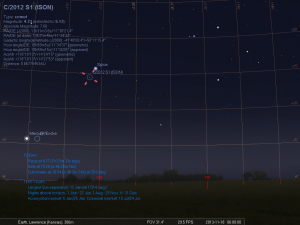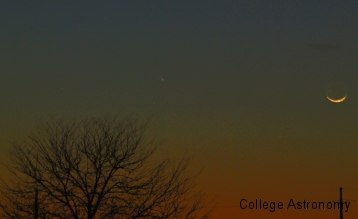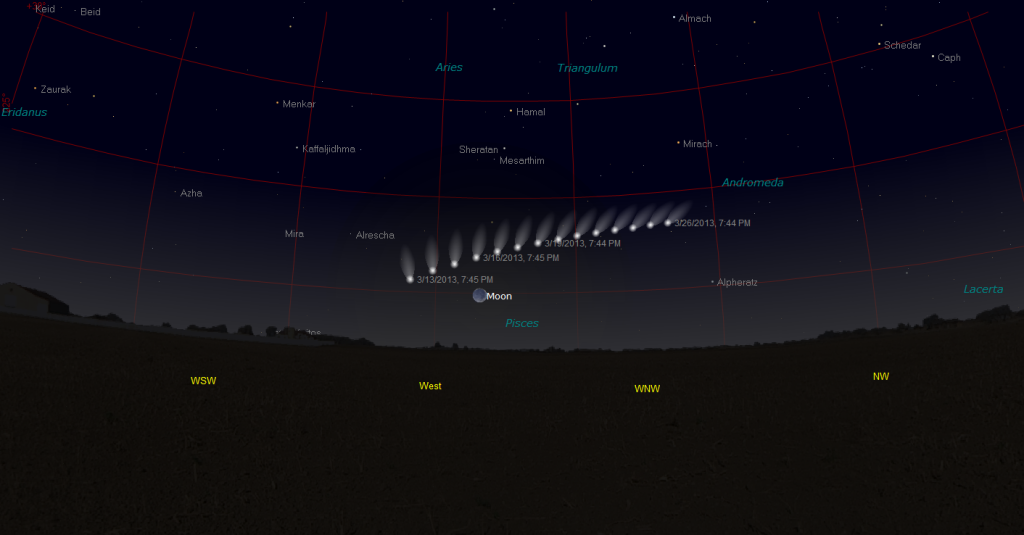After Comet PanSTARRS lack-luster debut everyone was happy to have another hope for a great comet show this year in the upcoming visit of Comet ISON (Formally designated C/2012 S1 ISON). This comet was discovered on the 21st of September, 2012 by Vitali Nevski and Artyom Novichonok using a 0.4-meter (16 in) reflector belonging to the International Scientific Optical Network (ISON) in Russia.
Although extremely dim at this point, around 12th magnitude (in dark skies we can see down to around the 6th magnitude), there is a chance that the comet will begin to brighten substantially enough to become a naked-eye comet. Early reports suggested it could become the best comet to see this century, but lately those statements have been pulled back and most observers are taking a wait-and-see stance.
Currently, for those of you with telescopes large enough to capture 10-12+ magnitude you should be able to start poking around the morning sky for the comet as soon as you'd like, it looks like approximately 5 to 6 AM CDT in the morning. The comet will be passing near Mars, and angularly near the Moon, in the morning skies over the next few weeks.
For naked-eye observers or those with smaller telescopes you'll probably need to wait a few more weeks to try to locate this comet. Based on information I've been able to dig up so far it looks like the first week in November from around 4 to 6 AM CST will be the best time to catch the comet and it could be a much brighter 6-8 magnitude at that time.
As the month of November progresses your ability to see the comet should improve through the late part of the month. Morning observing will probably be possible up to around November 20th, maybe a day or two past. Around this date the comet will be too close to the horizon (because it's getting ready to be sun-scorched) and the next opportunity will be after it rounds the Sun on it's way back out of the solar system with it's closest pass by Earth, at approximately 40 million miles, happening on December 26th.
Based on the information I've been able to gather from resources and through using Stellarium to plot the location, it seems that the time around November 18th (see image below, click for full image) will be ideal since the comet should be brightening at that point and not yet below the Eastern horizon. Once it finishes out the swing it is possible that the comet will remain easily visible into the month of January.
I'll be posting updates and any pictures I'm able to capture as the month goes on. Happy comet viewing!



